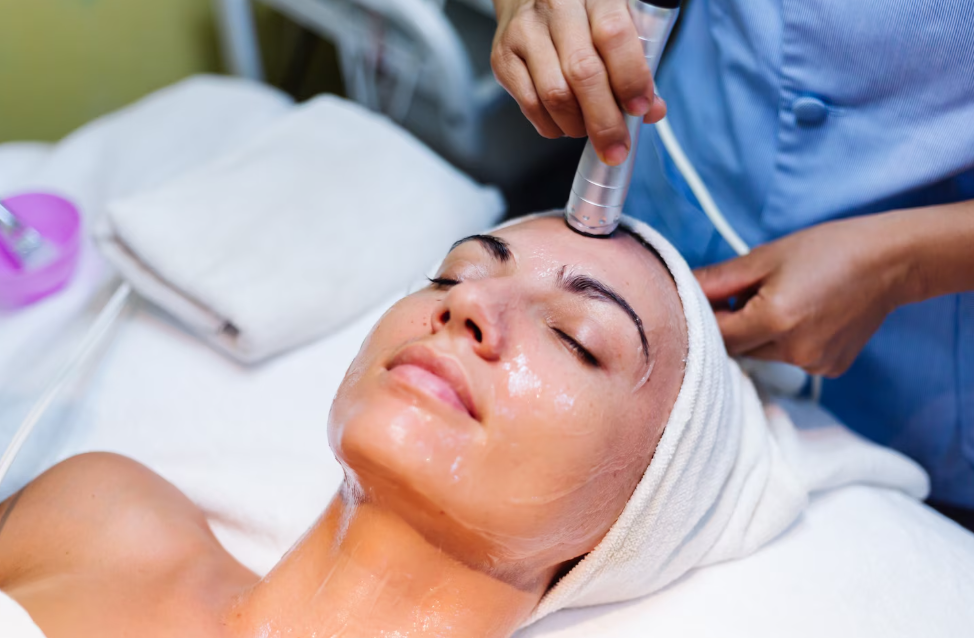Treatment Overview
Silicone Scar Gel is a topical treatment widely used in Korea to improve the appearance of scars, including acne scars, surgical scars, and post-procedure marks. It works by forming a thin, breathable protective barrier over the skin that:
- Locks in hydration, preventing excessive water loss.
- Reduces abnormal collagen overgrowth that can lead to raised scars.
- Softens and flattens existing scars while reducing redness and discoloration.
For acne scars, silicone scar gels are most beneficial in fresh, healing scars or post-procedure recovery after treatments like punch excision, subcision, or CO₂ fractional laser. While they cannot remodel deep atrophic scars, they are effective for preventing hypertrophic or red post-acne scars.
Purpose & Benefits
- Prevents Abnormal Scar Formation: Minimizes risk of raised or keloid-like scars.
- Flattens & Softens Scars: Helps improve scar smoothness.
- Reduces Redness & Discoloration: Improves the appearance of fresh scars.
- Non-Invasive & Easy to Use: Convenient at-home option.
- Post-Procedure Support: Enhances healing after acne scar surgeries or lasers.
- Safe for Long-Term Use: Suitable for sensitive and acne-prone skin.
Ideal Candidates
Silicone Scar Gel in Korea for acne scars is recommended for:
- Patients with fresh acne scars in the healing stage.
- Individuals undergoing post-procedural scar care (e.g., after punch excision, CO₂ laser, or subcision).
- Adults prone to hypertrophic scarring or prolonged redness after acne.
- Those seeking a gentle, non-invasive home treatment to complement in-clinic care.
Comparison with Other Treatments:
- Silicone Scar Gel: Best for early scar prevention and redness control.
- CO₂ Fractional Laser / Fraxel: Best for remodeling deep pitted scars.
- Subcision + Fillers: Best for tethered rolling scars.
- Microneedling RF: Best for collagen stimulation and texture repair.
- PRP / Growth Factors: Best for regenerative healing post-procedure.
Possible Risks & Complications
Silicone gels are considered extremely safe, but mild side effects can occur:
- Temporary Stickiness or Residue: Common after application.
- Mild Breakouts (rare): If applied too thickly on oily skin.
- Allergic Reaction (very rare): To preservatives or added ingredients.
Treatment Techniques Used
- Topical Gel Application: Applied in a thin layer 1–2 times daily.
- Silicone Sheets (Alternative): For larger scars, but less common for acne.
- Combination Protocols: Often used after in-clinic procedures to prevent worsening of healing scars.
- Duration of Use: Typically 2–3 months for visible improvement; longer for resistant scars.
Recovery & Aftercare
- Immediately: Forms a thin protective barrier over the scar.
- 2–4 Weeks: Redness begins to fade, scars feel softer.
- 2–3 Months: Noticeable flattening and reduction in discoloration.
Aftercare Tips:
- Apply consistently after cleansing.
- Avoid thick layers to prevent pore blockage.
- Pair with SPF 50+ sunscreen to protect healing scars from darkening.
- Use alongside dermatologist-recommended scar care products for synergy.
Results & Longevity
- Short-Term (4–6 Weeks): Redness and irritation decrease.
- Medium-Term (2–3 Months): Scars become flatter and less visible.
- Long-Term: Prevents hypertrophic or thick scars; maintenance use may be needed for stubborn cases.
Treatment Process in Korea
- Consultation & Scar Assessment – Doctor or dermatologist evaluates scar stage.
- Prescription or Recommendation – Medical-grade silicone gels prescribed or over-the-counter options suggested.
- Daily Application – Gel applied twice daily on clean skin.
- Post-Treatment Integration – Often prescribed after laser, excision, or subcision for optimal healing.
- Follow-Up – Dermatologist checks progress during scar treatment reviews.
Why Korea is a Top Destination
- Korean dermatologists emphasize prevention of worsening scars, making silicone gels a standard post-procedure care.
- Availability of KFDA-approved silicone gels with advanced formulations (often enriched with Vitamin E, peptides, or botanical extracts).
- Integration with multi-step acne scar protocols for comprehensive results.
- Affordable and widely available at clinics, pharmacies, and hospitals.
- Seoul is known for advanced scar management combining medical and skincare approaches.
Cost Range (Detailed Breakdown)
Pricing for Silicone Scar Gel in Korea for acne scars:
- Over-the-Counter Silicone Gel (15–30g tube): USD 20 – 60
- Prescription-Grade Silicone Gel: USD 40 – 100
- Post-Procedure Package (Silicone Gel + Laser/Scar Care): USD 300 – 800
- Premium Scar Programs (Laser + Subcision + Silicone Gel + PRP): USD 1,500 – 3,000 (multi-session packages)
Additional Costs in Korea:
- Consultation: USD 15 – 30
- Add-ons (Rejuran, PRP, Exosomes, Growth Factors): USD 150 – 500
💡 Many patients call silicone scar gel the “invisible scar shield”, as it protects and improves scars during the critical healing phase.
Popular Clinics in Seoul
- Banobagi Dermatology – Uses silicone gel in scar-healing packages.
- Oracle Dermatology – Post-procedure care with silicone gel + laser.
- Renewme Skin Clinic – Silicone gel + regenerative boosters for scar prevention.
- View Plastic & Dermatology – Acne scar protocols including silicone scar gel maintenance.
- Chaum Anti-Aging Center – Premium scar programs integrating silicone gels with regenerative treatments.




